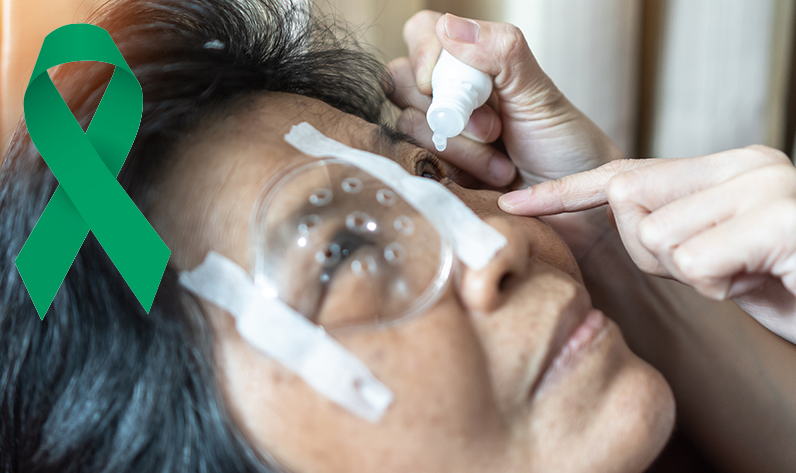Five things to know about glaucoma and how to protect your vision
During Glaucoma Awareness Month, resolve to learn about this sight-stealing disease and what you can do to reduce your risk. Your eyes will thank you for it.

At the start of each new year millions of Americans make lists of things they resolve to do to stay healthy and feel their best. What they may not realize is that feeling their best also includes seeing their best. January is Glaucoma Awareness Month — the perfect time to spread the word about this sight-stealing disease. So this year, add learning about glaucoma to your list of New Year's resolutions.
Know the facts about glaucoma
- Glaucoma is a group of diseases that damage the eye's optic nerve and can result in vision loss and even blindness.
- About 3 million Americans have glaucoma. It is the second leading cause of blindness worldwide.
- There are often no early symptoms, which is why 50 percent of people with glaucoma don't know they have the disease.
- Anyone can get glaucoma, but certain groups are at higher risk. These groups include African Americans over age 40, anyone over age 60, people with a family history of glaucoma, and people who have diabetes.
- Getting a comprehensive dilated eye exam is the only way to find out if you have glaucoma. During the exam, an eye care professional places drops in your eyes to widen the pupils and looks for signs of the disease in the optic nerve.
What you can do to prevent vision loss
There is no cure (yet) for glaucoma, but if it's caught early, you can preserve your vision and prevent vision loss. Taking action is key.
- If you are in a high-risk group, get a comprehensive dilated eye exam to catch glaucoma early and start treatment. If you're enrolled in the PPO, EPO, HDHP, or Medicare Supplement Plan, you pay just a $25 copay for routine annual vision exams with an optometrist or ophthalmologist who participates in the VSP Choice network. If you are diagnosed with glaucoma, your medical benefits also include a follow-up exam with a VSP provider for a $20 copay.
- Even if you're not in a high-risk group, getting a comprehensive dilated eye exam by the age of 40 can help catch glaucoma and other eye diseases early.
- Open-angle glaucoma (the most common form) does not have symptoms and is hereditary, so talk to your family members about their vision health to help protect your eyes — and theirs.
- Maintaining a healthy weight, controlling your blood pressure, being physically active, and avoiding smoking will help you avoid vision loss from glaucoma. These healthy behaviors will also help prevent type 2 diabetes and other chronic conditions.
Now that you've got the facts about glaucoma, make a resolution for healthier vision. Schedule a comprehensive dilated eye exam today and encourage your friends and family to do the same.
Sources: cdc.gov, nei.nih.gov
